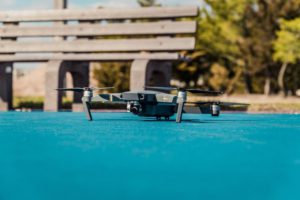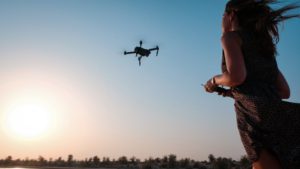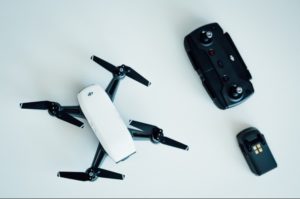
Drone Safety Tips – 15 Simple Ways to Make Your Next Flight a Safe One
June 24, 2019You may have seen my Mavic Pro Preflight Checklist – Steps to Take for Each Flight. That’s a great post for an in-depth checklist you can use for all of your flights that, not only includes safety considerations but also, helps to make sure you don’t forget anything that can ruin your plans.
That’s not the goal of today’s post. This post is going to cover Drone Safety Tips and offer 15 Simple Ways to Make Your Next Flight a Safe One.
Let’s be real. Flying a drone is just fun. Many times, we come home from work or school, grab our drones and hit the sky. That’s great but, with a just a little bit of effort, there’s a lot we can do to make sure our flights are conducted safely.
Let’s take a look at things to consider before you next flight. These won’t be huge hurdles or anything that will take away from the experience, but rather a few simple things to keep in mind and be aware of to help maximize the safety of the flight while still being able to enjoy it.
Table of Contents
THIS POST MAY CONTAIN AFFILIATE LINKS. PLEASE SEE MY AFFILIATE DISCLOSURE FOR MORE INFORMATION.

Before Leaving the House/Office
Believe it or not, there are a few steps to consider before you even leave your house or office…
Check the Weather Forecast
This may seem obvious, but many people don’t even think about the weather conditions when they grab their drones and head out the door. The obvious things to consider are the expected weather at the flight location (wind, visibility, will there be rain, etc.). Each of those plays a part in the over-all safety of the flight.
Wind
Can your drone and, more importantly, your skill level handle the current wind conditions? Don’t fly in conditions that may cause loss of control.
Visibility
Will you be able to maintain line of sight with your drone to make sure you don’t run into anyone or anything? Too many times I see a video with a drone hitting a tree, building, boat, etc., all because the pilot was not in the line of sight to see what was happening.
Precipitation
Are the conditions right for flight. I don’t have a waterproof drone. Do you? Water can cause all kinds of issues with drones. The loss of just one motor can cause you to lose control of your aircraft.
Temperature
Is the temperature within your drone’s operating range? Overheating can cause system failures and lead to loss of control.
KP Index
This one is a hidden danger. It’s a geomagnetic storm index that can indicate possible disruption to GPS reception. Many drone features rely on adequate satellite lock and correct information to operate properly. Loss of GPS services can cause some features to fail and loss of the aircraft (think RTH but without the proper GPS information).
One great app for checking the weather information is UAV Forecast. It’s the one I go to.
Perform a Quick Inspection of your Aircraft and its Various Parts
Going over your aircraft before you leave the house or office will help you discover issues that might prevent a flight altogether.
Batteries
A very common issue is battery swelling. Check your batteries for any indications of swelling. Check the contacts for corrosion (both on the batteries and aircraft).
Also make sure they’re fully charged. You don’t want to get to your destination and find that the batteries have self-discharged limiting your flight time. It’s always a good idea to fully charge them before flight. It gives you more options time-wise should the need to change plans pop up. This includes the remote controller battery too.
Props
Make sure to check the props and pack a spare set. Look for chips, cracks, indications of weakness and wear. Be extra vigilant at the hinge area and look for anything that suggests a prop should be replaced.
Aircraft
Look for cracks, loose parts, camera issues, etc. A crack in the fuselage may not be flight ending but one in an arm, might be.
Airspace
The FAA has been busy when it comes to rules and regulations for recreational pilots. Make sure to check the airspace for the area you intend to fly in. If it’s controlled, make sure you have the ability to request and be granted clearance to fly in the area.
I use two apps for this purpose: B4UFly (this one was developed in partnership with the FAA) and AirMap (this is the one I use to double-check what B4UFly says and actually request permission to fly in controller airspace.
Those are the three main safety issues to consider before leaving your home or office. Now let’s take a look at what to consider when on-site…
 Before the Flight
Before the Flight
OK, so now you’re on-site and ready to fly. Take a moment to look at your equipment and surroundings. Look for the following:
Your Aircraft
Do another once-over of your aircraft. Make sure the battery and props are attached securely and remove any restrictive devices (like the camera gimbal).
People and Animals
Make sure to conduct your flight a safe distance from others. This includes, but is not limited to, your take off and landing points, flight path and base of operations. Flying around people can be dangerous. Even more so around animals whose behavior can be difficult to anticipate.
Take Off and Landing Point(s)
Make sure that your take off and landing points are sufficiently clear of obstacles. Tree and structures can cause issues, especially if the Return to Home feature is engaged. Be sure there’s adequate clearance.
Other Aircraft
You may not be the only one flying in the area today. Take a moment to look for any other pilots out there and, of course, keep an eye out for manned areal traffic as well.
Take Off
Make sure the take off area is clear and, if there are others nearby, announce your intentions before taking off. This step is simple, yet can prevent unexpected behavior from people nearby startled by your actions.
These five steps can make a big difference in your over-all flight safety.
 During the Flight
During the Flight
Now that you’re in the air, there are a few things to keep in mind as you enjoy your flight…
Be Aware of Your Surroundings
This actually applies to yourself as well as your aircraft.
Pilot
Keep an eye out for others near you that can be a distraction. If you’re in a park, for example, be aware of others playing nearby. Frisbee, tossing a football, playing fetch with the dog, etc. can all end up with someone or something running into you while you’re concentrating on your flight. Be aware of such situations and try to place yourself outside of “harms way”.
Aircraft
Keep line of sight on your aircraft and keep an eye out for any airborne objects that can intersect your flight path. Birds, planes, the Frisbee I mentioned earlier can all have undesirable effects on your aircraft should they come in contact with it.
If you’re planning to fly long distances our around objects, make sure you have a buddy that can keep track of it when it leaves your line of sight and that you’re in constant and direct communication with them. This can be the difference between an uneventful flight and a lost or damaged drone (not to mention damage or injury to others).
Weather
You may have checked the weather before your flight but it can be a fickle thing and we know the forecast is anything but accurate. Pay attention to what’s going on with the clouds, wind and so on. Weather patterns can change quickly, making a smooth and enjoyable flight into a fight for control.
Lading
Just like taking off, make sure the landing area is clear and announce your intentions to those nearby. Be aware of animals that might see your aircraft as a toy to chase and try to kill the motors as soon as your aircraft is safely on the ground.
Focus
Don’t get distracted. I see pilots, all the time, that are carrying on conversations and showing people their controllers and screens. That’s great, when your objective is to eductate others or show them what droning is all about, and I do encourage such activities, but do that in a controlled way.
Make it your goal for that flight vs, mixing it into a flight your conducting for other purposes. Focus on your flight and its intended purpose.
These five tips will go a long way to help prevent a safety incident.
 After the Flight
After the Flight
There’s not a whole lot to consider after the flight has completed from a safety standpoint. Most of the work is done in the preflight and flight phases. Still, there are a couple of things you can do:
Power Down the Aircraft
I already mentioned stopping the motors as soon as your aircraft is safely on the ground. Another step to take is to power it off completely. This will help to mitigate any risk of the motors being started up inadvertently, which can cause injury, should any of the props come in contact with someone or something.
Check the Batteries
It’s a good idea to remove and inspect the batteries after a flight. Batteries can expand or even split open and tend to get hot when in use. Removing the batteries from the aircraft ensures that the aircraft will not be inadvertently powered on (I actually had that happen when my Mavic Pro was in the soft carrying bag. I’m lucky it didn’t overheat or worse.), allows you to take a closer look at it and exposes more of it to the surrounding air for quicker cooling (assuming you’re not in 100° weather.
These two tips, are pretty much it. I suppose you could take notes for future reference but, as far as safety goes, I can’t really think of much else.
Conclusion – What Do You Think of These Drone Safety Tips?
I have provided you with 15 Simple Ways to Make Your Next Flight a Safe One. If you implement my suggestion here, you should have a pretty safe flight experience over-all.
I try to provide Drone Safety Tips on a regular basis. If you found this post useful (or at least interesting), please check out this post titled Drone Safety Tips – A Man Was Killed While Trying to Retrieve a Drone From a Tree.
What do you think? Did you find these tips useful? Did I miss one you think should be included. Do you have a related experience you’d like to share? Please let me know by commenting below.
Thank you,
Scott Hinkle
MavicManaics.com





Family and I saw Toy Story 4 today and before the movie started, we saw aircraft schools were now being provided. I guess drones and all this is becoming more and more common towards the new generations. I believe it is something so new that I have become outdated and yes, I am young! I am just relieved these safety tips are provided for the best of us!
Hello there,
My mother’s birthday is this Wednesday and she’s a huge fan of the Toy Story franchise. I’m going to take her to see Toy Story 4 that evening.
Yes, training classes and schools are popping up everywhere. There are even free courses being offered by colleges. See my post titled “Drone College Courses – 2 Free Courses Offered by Grossmont College.
I’m happy to provide whatever tips I can to help the droning community.
Thanks for commenting.
Scott
You basically said everything about safe flying. I just want to add to stay away from airports because it’s a no-fly zone. It can distract or compromise a flight.
We also need to consider the safety of other people so so don’t fly your drone above too many groups of people like parks, roadways, and schools. Be respectful of private properties and homes.
I remember one episode from The Good Wife about drones. The house owner was so pissed at the drone flying over his house everyday so he shot it and there goes the trial. Drones are fun to fly but it should always go with social and ethical responsibility.
Thanks for sharing this viable information.
Hello,
There are actually regulations in place regarding flying over people.
Sadly, the shooting at drones issue on television isn’t limited to theatrical exaggeration. Check out my post titled “Community Interactions – Sadly, Drone, Engaged in Search for Missing Dog, Shot Out of the Sky“.
Flying near airports falls within the flying in controlled airspace.
Thank you for commenting.
Scott
We were just thinking about getting a drone to go hiking with us this summer – something that we can put a camera on to get an aerial view – just for fun. It sounds like a simple thing until I came across these safety tips of yours. It is a public park and I am not sure if there are any rules and regulations involved there. Better to check it out before we venture too far off the limits. Thanks for pointing it out.
Rules vary by location and governing body (i.e. State vs National parks). It’s best to check with the park in question and also check the surrounding airspace. Camera drones are a blast though.
Scott